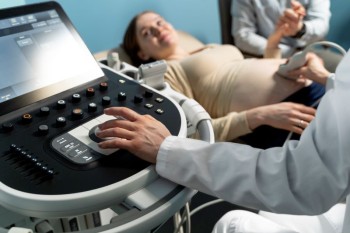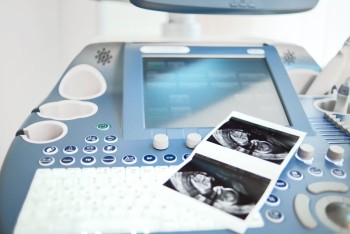
USG Thyroid or Neck imaging is a non-invasive and highly effective method for assessing the thyroid gland, parathyroid glands, and adjacent structures within the neck.
Ultrasound / USG Thyroid or Neck in India with Cost
USG Thyroid or Neck in
Detail: Navigating Precision in Thyroid Imaging
In the realm of diagnostic imaging, Ultrasound or
USG (Ultrasonography) Thyroid or Neck examinations stand as specialized
techniques focused on the detailed visualization of the thyroid gland and
surrounding structures. This comprehensive guide aims to elucidate the
significance, procedure, and invaluable insights provided by USG Thyroid or
Neck imaging in achieving precision in thyroid diagnostics.
Introduction
USG
Thyroid or Neck imaging is a non-invasive and highly effective method for
assessing the thyroid gland, parathyroid glands, and adjacent structures within
the neck. This technique plays a pivotal role in diagnosing various thyroid
conditions, providing valuable information for medical interventions.
Understanding
USG Thyroid or Neck Imaging
Unlike
broader ultrasound examinations, USG Thyroid or Neck imaging concentrates on
the intricate structures of the thyroid and surrounding tissues. High-frequency
sound waves create detailed, real-time images, enabling healthcare providers to
evaluate the thyroid's size, shape, and detect abnormalities such as nodules or
cysts.
Importance
in Thyroid Diagnostics
USG
Thyroid or Neck imaging holds paramount importance in the diagnosis and
management of thyroid disorders. It aids in identifying thyroid nodules, cysts,
inflammation, and assists in guiding procedures such as fine-needle aspiration
(FNA) for further evaluation.
Preparation
for the Scan
Getting
ready for a USG Thyroid or Neck examination is usually simple. Patients are
usually recommended to avoid wearing neck-covering jewelry or clothing to
ensure the best exposure of the area. Fasting or dietary restrictions are
typically not necessary.
Procedure: Precision in
Thyroid Imaging
Patient Positioning: Patients are positioned to expose the neck area
adequately, allowing for optimal imaging of the thyroid and surrounding
structures.
Gel
Application: A water-based gel is applied to the skin over the thyroid
area, facilitating the transmission of sound waves and ensuring proper contact
with the transducer.
Transducer
Movements: The transducer, a handheld device, is gently moved over the
gel-coated skin, emitting and receiving sound waves. This process creates
real-time images of the thyroid and adjacent tissues.
Multi-Angle
Assessment: USG Thyroid or Neck imaging involves assessing the thyroid
from various angles to obtain a comprehensive view of its structure and detect
any abnormalities.
Assessment Areas in
Thyroid Imaging
USG Thyroid or Neck imaging is employed for the
detailed evaluation of various thyroid aspects, including:
Thyroid
Nodules: Identifying and characterizing nodules for potential malignancy.
Thyroid
Cysts: Detecting fluid-filled cysts within the thyroid gland.
Thyroid
Inflammation: Assessing for signs of inflammation or thyroiditis.
Parathyroid
Glands: Evaluating the parathyroid glands for abnormalities.
Benefits of USG Thyroid
or Neck Imaging
High Resolution: Provides detailed and high-resolution images of the thyroid gland.
Real-time
Visualization: Enables dynamic observation, capturing the thyroid's
movement during swallowing.
Guidance
for Interventions: Assists in guiding procedures such as fine-needle
aspiration for further evaluation of nodules.
Risks and Considerations
USG Thyroid or Neck imaging is generally considered
a safe procedure with minimal risks. It does not involve exposure to ionizing
radiation, ensuring patient safety.
Clinical Applications
The applications of USG Thyroid or Neck imaging
extend across various medical scenarios, including:
Thyroid
Nodule Assessment: Characterizing nodules to determine whether further
investigation or intervention is necessary.
Thyroid
Disease Monitoring: Monitoring changes in the thyroid gland for individuals
with thyroid disorders.
Parathyroid
Evaluation: Assessing the parathyroid glands for abnormalities
affecting calcium balance.
Expert Perspectives
Endocrinologists,
thyroid specialists, and radiologists emphasize the crucial role of USG Thyroid
or Neck imaging in thyroid diagnostics. Their expertise ensures accurate
interpretations and informed medical decisions.
Technological
Advancements
Ongoing
advancements in ultrasound technology contribute to the refinement of USG
Thyroid or Neck imaging, enhancing image quality, and diagnostic capabilities.
Patient
Experience
Patients
generally find USG Thyroid or Neck imaging to be a well-tolerated and
non-invasive procedure. The absence of radiation exposure contributes to a positive and reassuring patient experience.
Conclusion
In
conclusion, USG Thyroid or Neck imaging emerges as a pivotal tool in thyroid
diagnostics, offering precision and real-time insights into the thyroid gland
and surrounding structures. Its role in identifying and characterizing thyroid
abnormalities contributes to enhanced patient care and treatment outcomes.
Frequently Asked Questions (FAQs) about USG Thyroid or Neck Imaging
1. Is
USG Thyroid or Neck Imaging painful?
No, USG
Thyroid or Neck Imaging is a non-invasive and painless procedure. The
transducer is gently moved over the skin, and there are no needles or
injections involved.
2. How
long does a USG Thyroid or Neck scan take?
The
duration of the scan is relatively short, typically taking around 15 to 30
minutes. The exact time may vary depending on the complexity of the examination
and the need for detailed assessments.
3. Is
there any preparation required before the USG Thyroid or Neck scan?
Minimal
preparation is needed. Patients may be advised to avoid wearing jewelry around
the neck and to wear clothing that allows easy access to the neck area. Fasting
or dietary restrictions are usually not necessary.
4. Are
there any risks associated with USG Thyroid or Neck Imaging?
USG
Thyroid or Neck Imaging is deemed a secure procedure with minimal risks. Since
it doesn't use ionizing radiation, it is a preferred imaging method,
particularly for pregnant women.
5. Can
USG Thyroid or Neck Imaging detect thyroid cancer?
While
USG can identify suspicious nodules, it cannot definitively diagnose cancer.
Further evaluation, such as fine-needle aspiration (FNA) or biopsy, may be
recommended to determine if a nodule is cancerous.
6. What
information can USG Thyroid or Neck Imaging provide about thyroid nodules?
USG can
offer insights into the size, shape, and characteristics of thyroid nodules. It
helps in determining whether a nodule is solid or fluid-filled and aids in
assessing the risk of malignancy.
7. Is
USG Thyroid or Neck Imaging safe during pregnancy?
Yes,
USG is generally considered safe during pregnancy, and it is often used to
assess the thyroid or other structures in the neck. However, it's essential to
inform the healthcare provider if you are pregnant or suspect pregnancy.
8. Can
USG Thyroid or Neck Imaging be used for monitoring thyroid conditions?
Yes,
USG Thyroid or Neck Imaging is valuable for monitoring changes in the thyroid
gland. It helps healthcare providers track the progression of thyroid disorders
and assess the effectiveness of treatment.
9. How
frequently should someone undergo USG Thyroid or Neck Imaging?
The
frequency of imaging depends on the individual's medical history and the
presence of specific conditions. Your healthcare provider will determine the
appropriate intervals for follow-up scans.
10. Does
USG Thyroid or Neck Imaging replace other thyroid diagnostic tests?
No, USG
is a complementary tool and is often used alongside other diagnostic tests.
Blood tests, thyroid function tests, and, if necessary, biopsies may be
conducted to provide a comprehensive evaluation of thyroid health.
These FAQs
aim to address common queries related to USG Thyroid or Neck Imaging, offering
insights into the procedure, its benefits, and its role in thyroid diagnostics.
Always consult with your healthcare provider for personalized information based
on your medical history.
(0)
Login to continue



